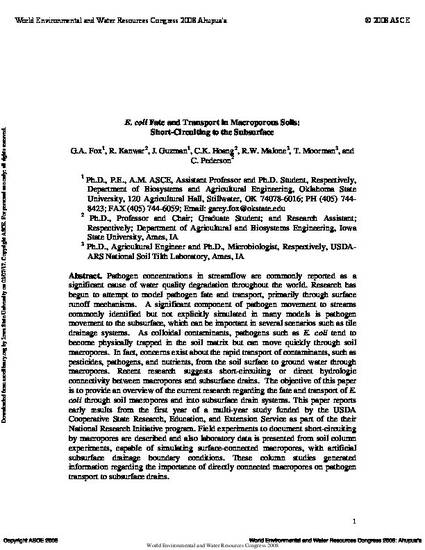
Pathogen concentrations in streamflow are commonly reported as a significant cause of water quality degradation throughout the world. Research has begun to attempt to model pathogen fate and transport, primarily through surface runoff mechanisms. A significant component of pathogen movement to streams commonly identified but not explicitly simulated in many models is pathogen movement to the subsurface, which can be important in several scenarios such as tile drainage systems. As colloidal contaminants, pathogens such as E. coli tend to become physically trapped in the soil matrix but can move quickly through soil macropores. In fact, concerns exist about the rapid transport of contaminants, such as pesticides, pathogens, and nutrients, from the soil surface to ground water through macropores. Recent research suggests short-circuiting or direct hydrologic connectivity between macropores and subsurface drains. The objective of this paper is to provide an overview of the current research regarding the fate and transport of E. coli through soil macropores and into subsurface drain systems. This paper reports early results from the first year of a multi-year study funded by the USDA Cooperative State Research, Education, and Extension Service as part of the their National Research Initiative program. Field experiments to document short-circuiting by macropores are described and also laboratory data is presented from soil column experiments, capable of simulating surface-connected macropores, with artificial subsurface drainage boundary conditions. These column studies generated information regarding the importance of directly connected macropores on pathogen transport to subsurface drains.
Available at: http://works.bepress.com/rskanwar/153/

This paper is from Proceedings of the World Environmental and Water Resources Congress 2008 (Reston, VA: ASCE, 2008).